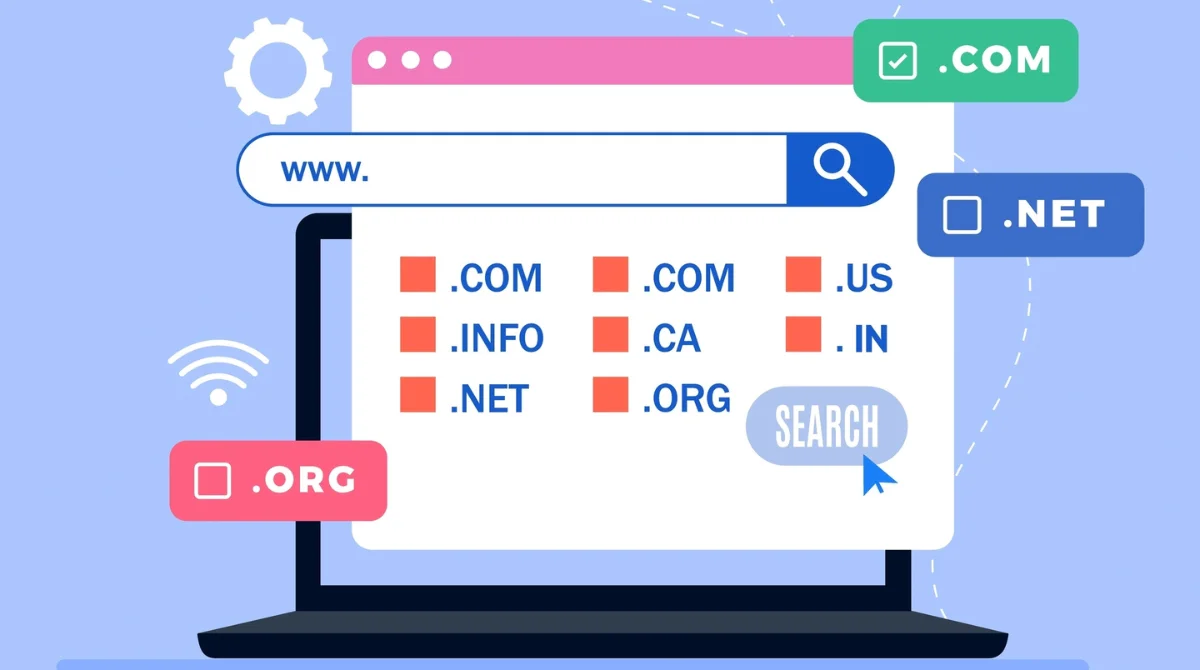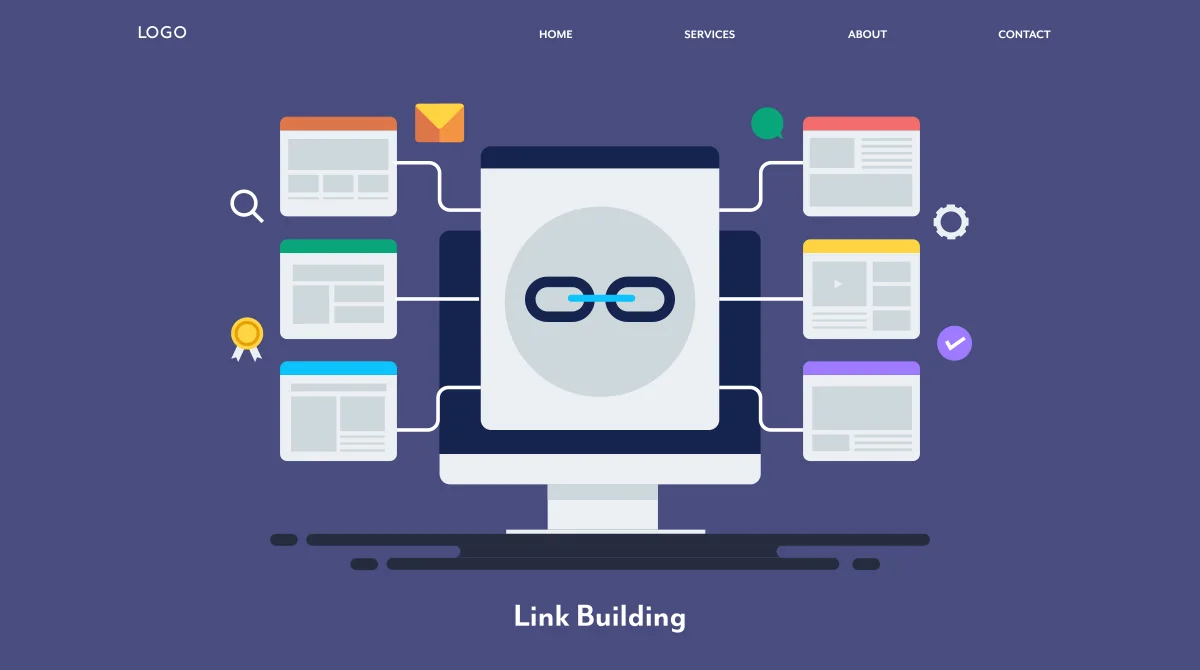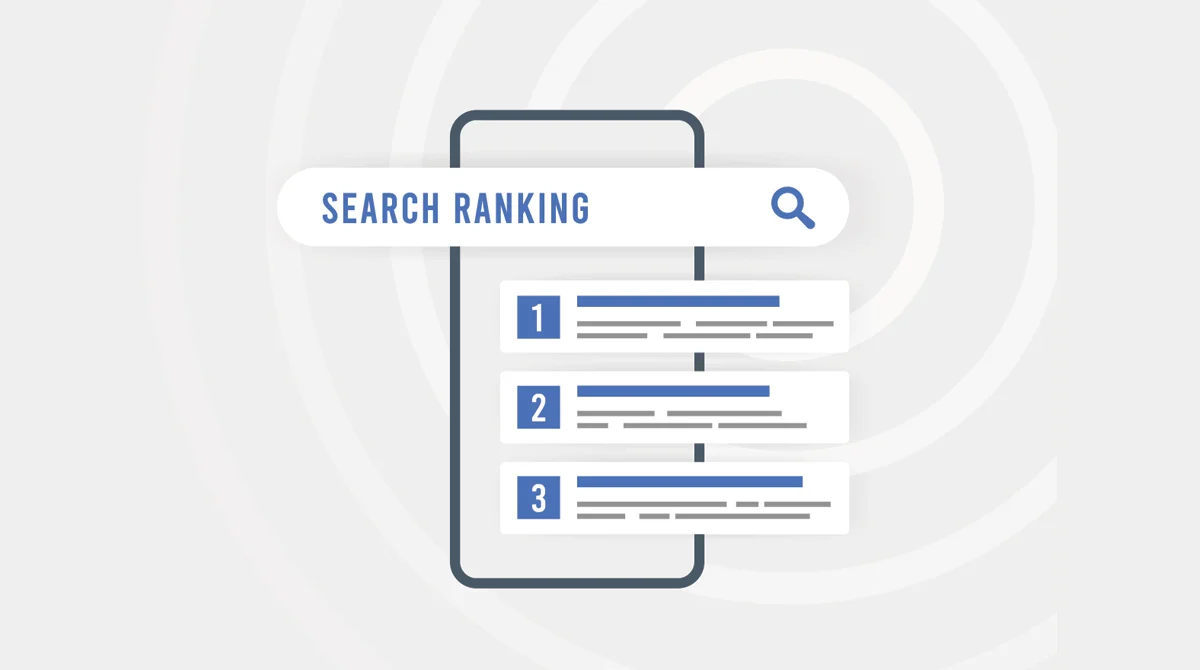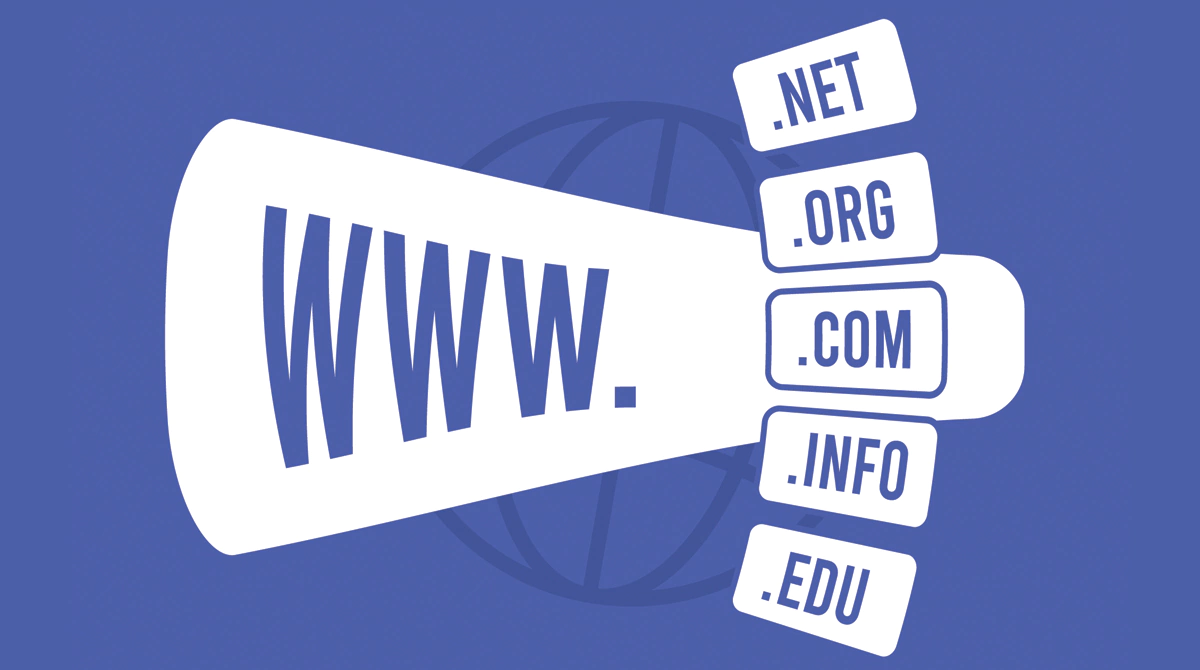In the contemporary digital landscape, establishing a robust online identity is crucial. Nonetheless, selecting the ideal domain name can pose a challenge due to the multitude of options that are frequently already registered. Opting for an unsuitable name can negatively impact your brand’s reputation, complicate the process for potential customers to locate you, and bewilder your audience. If you delay your decision, there’s a chance that another party may acquire the desired name. By familiarising yourself with various kinds of domain options and adhering to helpful guidelines, you can choose a web address that aligns perfectly with your brand and objectives. At Make My Website, we simplify this journey by providing expert guidance to assist you in discovering and securing the ideal web address for your company.
Types of domains
Domains are divided into different categories, each with its special use. Here are the main types:
Top-Level Domains (TLDs)
Top-level domains represent the final segment of a web address that individuals commonly encounter. They appear at the end of the domain name and indicate the type of website.
Generic TLDs (gTLDs)
- These include domains like .com, .org, .net, and .info, along with others.
- .com is very well-known and works for many purposes, so it’s often thought of as the usual choice.
- Example: A small business might pick mybusiness.com to look more professional.
New gTLDs:
- Extensions recently added, such as .shop, .blog, .tech, and .xyz.
- Perfect for specific branding and unique name ideas.
- Example: A tech company might choose to innovate.tech to show what they do.
- Sponsored TLDs (TLDs)Particular website domain extensions are designated for specific categories of organisations, including .edu for educational entities, .gov for governmental bodies, and .mil for armed forces.
- For instance, a college might use college.edu to show it’s an educational place.
Country Code TLDs (ccTLDs)
These website endings are made for specific countries or areas and work well for businesses wanting to reach local customers.
Examples:
- .us (United States)
- .uk (United Kingdom)
- .in (India)
- .ca (Canada)
Advantages:
- Enhances local SEO.
- Builds trust among regional users.
- Example: A bakery in Canada might choose sweetcakes.ca to emphasise its local presence.
Second-Level Domains (SLDs)
Second-level domains denote the portion of a domain name that is positioned before the top-level domain (TLD).
Special Domains:
- In some places, special domains are used with country codes, like:
- .co.uk (for businesses in the UK)
- .ac.in (for schools in India)
Importance:
- This is where your brand is shown, so people need to remember you.
- Example: An online bookshop might use readerscorner.co.uk for customers in the UK.
Internationalised Domain Names (IDNs)
Internationalised domain names permit the utilisation of characters and symbols from languages beyond just English. This is very important for companies that want to connect with people in their language.
Examples:
- Arabic: العربية.com
- Chinese: 网络.cn
Benefits:
- Helps reach different language groups.
- Example: A travel company in China could use 旅行.cn to get more local customers.
Premium Domains
High-quality domain names are short, simple, and very popular. They often cost a lot because they are valuable in the market.
Examples:
- car.com
- hotels.com
Why They Are Important:
- They help improve a brand’s reputation and online search results.
- Example: A high-end car dealer might buy luxurycars.com to show they are a trusted online source.
Expired and Parked Domains
Expired Domains
- Domains that were once owned but not renewed are now open for buying through auctions or sellers.
- Example: A fitness blog could buy an old domain like fitlifestyle.com to use its existing links.
Parked Domains
- Domains that are registered but not in use are usually kept for later use or to sell later.
- Example: A company might hold futureproject.com for a future project.
Branded Domains
Branded TLDs are special website endings made by companies, like Google or .microsoft, to make their brand stronger and more trusted.
Example: Google uses blog.google for its official blog.
Special Use Domains
These website endings are only for certain uses, and regular people can’t register them.
Examples:
- .localhost (used for local testing and networking)
- .test (used for test environments)
- For instance: A developer could use .test to test software in a controlled setting.
What to know before choosing a domain
Picking the right domain name is essential and can help a lot. Here are some main things to think about:
Check domain renewal options
Choose a domain registration service that clearly specifies the renewal fees to prevent unexpected charges. Selecting the auto-renewal feature is a smart choice to guarantee that your domain stays active, even if you miss the renewal deadline. For example, if you neglect to renew a domain like yourbrand.com, it could become accessible to others, which might harm your brand’s image.
Your domain name
Your website address should show what your brand does and who you are while also being short and easy to recall. Don’t pick a name that might puzzle people. For instance, a photographer might pick johnsmithphotography.com to show what they do clearly.
Avoid hyphens and numbers
Adding hyphens or numbers to your website address can cause mix-ups and mistakes when typing, making it harder for people to remember or share your site. For example, my-site4u.com could be hard to type or say correctly. A simpler, more user-friendly option would be mysiteforyou.com.
Research your desired domain name
Before choosing a domain name, make use of WHOIS tools to check if it is available and verify that it hasn’t been registered before by another individual. Furthermore, ensure that the name adheres to trademark laws to avoid any legal issues. For example, opting for a name such as appledevices.com might result in conflicts with Apple Inc. and potentially lead to legal consequences.
Check for relevant top-level domains
Although .com is the most recognised domain suffix, opting for newer alternatives such as .tech or .blog can make your brand more distinct in particular sectors. Additionally, employing country-specific domain extensions, such as .au for Australia, can enhance your brand’s connection with regional clients. For instance, a software company could use innovations.tech to show they are modern and focused on technology.
Keep your domain name short
Shorter website addresses are more straightforward to type, remember, and share. Aim to select names that are 15 characters or fewer while ensuring they effectively convey the essence of your brand. For instance, rather than using bestbakeryinthecity.com, a more straightforward and more impactful option would be citybakery.com.
Buy multiple domain names
To avoid confusion and traffic loss, register different variations of your domain, such as alternate extensions or common misspellings. You can then redirect these domains to your main website. For instance, owning both yourbrand.com and yourbrand.net ensures visitors reach your site regardless of which version they type.
Protect your brand
Safeguard your brand by registering your domain name and logo as trademarks. Furthermore, establish alerts to track any unauthorised use of your brand on the internet. For example, companies like Coca-Cola actively track their name and logo to prevent misuse.
Keep it short
Choose domain names that are brief, straightforward, and simple to write. This boosts the recall value of your domain and elevates its prominence in search outcomes. For instance, rather than a complicated name like w3b-des1gnz.com, a more appropriate choice would be webdesigns.com.
Use keywords
Incorporate relevant keywords into your domain to improve search engine visibility, but avoid overstuffing it with unnecessary words. A good domain balances SEO value with clarity and readability. For instance, a yoga studio could use yogacenter.com to boost search rankings while remaining clear and professional naturally.
Act quickly
Attractive website addresses are greatly sought after and can be acquired swiftly, making it essential to obtain the name you wish for without hesitation. Furthermore, think about securing the domain for several years to guarantee that you retain ownership for a longer duration and minimise the risk of it being lost upon expiration. For example, if you decide on a name like amazingbrand.com, do not delay in registering it right away to protect your online presence.
Conclusion: Safely Register Your Domain with Confidence
Premium domain names are highly sought after and can be acquired quickly, so it’s essential to grab the one you want without delay. Furthermore, think about registering the domain for several years to ensure you keep ownership for a longer time and minimise the risk of it expiring. For instance, if you choose a name like fantasticbrand.com, ensure that you acquire it immediately to safeguard your online identity.
When introducing a new brand or broadening an existing one, choosing the right domain name is essential. Don’t wait—secure your domain today and begin laying the foundation for your digital success!



















